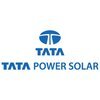Junior Engineer Electrical
30+ Junior Engineer Electrical Interview Questions and Answers for Freshers

Asked in Hindalco Industries

Q. *Mention what is the difference between generator and alternator? *Mention what are the different kind of cables used for transmissions?
Generator produces direct current while alternator produces alternating current. Different cables used for transmission include coaxial, twisted pair, and fiber optic cables.
Generator produces direct current (DC) while alternator produces alternating current (AC)
Generator uses slip rings and brushes for transmission while alternator uses a commutator
Different cables used for transmission include coaxial, twisted pair, and fiber optic cables

Asked in Tata Steel

Q. What is the difference between an ideal transformer and a practical transformer?
Ideal transformer is theoretical with no losses, while practical transformer has losses due to resistance, leakage flux, etc.
Ideal transformer has no losses, while practical transformer has losses due to resistance, leakage flux, hysteresis, and eddy currents
Ideal transformer has infinite efficiency, while practical transformer has efficiency less than 100%
Ideal transformer has no voltage drop, while practical transformer has voltage drop due to resistance
Ideal transformer ha...read more

Asked in Hindalco Industries

Q. What are the main advantages of speed control using a thyristor?
Thyristor speed control offers precise control, energy efficiency, and reduced maintenance costs.
Precise control of motor speed
Improved energy efficiency by reducing power wastage
Reduced maintenance costs due to less wear and tear on motor components
Smooth acceleration and deceleration of motors
Ability to control large motors with ease

Asked in Tata Power Solar

Q. How many power transmission projects have you worked on?
I have experience in building power transmission systems.
I have built power transmission systems in my previous job.
I have worked on projects involving power transmission systems.
I am familiar with the process of building power transmission systems.
I have knowledge of the equipment and materials required for power transmission systems.
I have experience in designing power transmission systems for different environments.

Asked in Hindalco Industries

Q. *Why Transformer Rated In kVA, Not in KW? *What are transformer losses & their types?
Transformers are rated in kVA because it takes into account both active power (KW) and reactive power (KVAR). Transformer losses include copper losses and iron losses.
Transformers are rated in kVA because they handle both active power (KW) and reactive power (KVAR).
kVA rating considers the total power (apparent power) that the transformer can handle, including the power needed for magnetizing the core.
Transformer losses include copper losses (I²R losses) and iron losses (eddy...read more

Asked in Tata Steel

Q. What is the EMF equation of a transformer?
The emf equation of a transformer relates the induced voltage to the number of turns in the primary and secondary coils.
The emf equation of a transformer is given by: E = N*dΦ/dt, where E is the induced voltage, N is the number of turns, and dΦ/dt is the rate of change of magnetic flux.
This equation shows that the induced voltage in a transformer is directly proportional to the number of turns in the coils and the rate of change of magnetic flux.
The emf equation is important ...read more
Junior Engineer Electrical Jobs




Asked in Pioneer Polyleathers

Q. What is the difference between a current transformer and a potential transformer?
Current transformer is used to measure current while potential transformer is used to measure voltage.
Current transformer is connected in series with the circuit being measured, while potential transformer is connected in parallel.
Current transformer steps down the current to a measurable level, while potential transformer steps down the voltage.
Current transformer is used for protection and metering purposes, while potential transformer is mainly used for metering and contro...read more

Asked in Torrent Power

Q. How does communication occur through power lines?
Communications through power lines occur using a technology called Power Line Communication (PLC).
Power Line Communication (PLC) is a technology that allows data to be transmitted over existing power lines.
PLC uses the frequency range of the power lines to carry data signals.
Modulation techniques are used to encode the data onto the power line signals.
PLC can be used for various applications such as smart grid systems, home automation, and broadband internet access.
Examples o...read more
Share interview questions and help millions of jobseekers 🌟

Asked in Ritis Meera Infra Energy LLP

Q. Network Theorems, Type of Towers used in Transmission & Distribution line.
Network theorems and types of towers used in transmission and distribution lines are important concepts in electrical engineering.
Network theorems include Thevenin's theorem, Norton's theorem, and Superposition theorem.
Types of towers used in transmission and distribution lines include suspension towers, tension towers, and dead-end towers.
Suspension towers are used for long spans, tension towers for shorter spans, and dead-end towers for the end of a line.
The choice of tower...read more

Asked in Globalization Partners International

Q. What is a current transformer?
A current transformer is a type of instrument transformer used to measure alternating current.
Used to step down high currents to a lower, more manageable level for measurement
Consists of a primary winding and a secondary winding
Secondary winding is connected to measuring instruments or protective relays
Provides accurate current measurement without affecting the main circuit

Q. What is electricity?
Electricity is the flow of electrons through a conductor.
Electricity is a form of energy that powers most of our modern devices.
It is generated by various sources such as coal, wind, solar, and hydro power.
Electricity can be stored in batteries and used later.
It can be dangerous if not handled properly and can cause electric shocks or fires.
Electricity is measured in units of volts, amps, and watts.

Asked in Globalization Partners International

Q. What is a potential transformer?
A potential transformer is a type of instrument transformer used to step down high voltage to a lower, safer voltage for measurement or control purposes.
Used to step down high voltage to a lower voltage for measurement or control purposes
Provides accurate voltage measurements for meters and relays
Commonly used in power systems for protection and metering applications

Asked in Tata Steel

Q. What is the unit of inductance?
The unit of inductor is Henry (H)
The unit of inductor is named after American scientist Joseph Henry
It is represented by the symbol 'H'
1 Henry is equal to 1 volt-second per ampere

Asked in Aggreko

Q. How much current can the human body withstand?
The amount of current that the human body can withstand varies depending on various factors.
The resistance of the human body plays a significant role in determining the amount of current it can withstand.
Dry skin has higher resistance compared to wet or broken skin, making it more resistant to electric shock.
The path of the current through the body also affects the severity of the shock.
The duration of exposure to the current is another important factor.
The frequency of the c...read more

Asked in Jindal Stainless

Q. Tell me about the differences between AC and DC motors.
AC motors use alternating current, while DC motors use direct current, differing in operation and applications.
AC motors are powered by alternating current, which changes direction periodically.
DC motors operate on direct current, providing a constant voltage and current flow.
AC motors are commonly used in industrial applications, such as fans and pumps.
DC motors are often found in battery-operated devices, like toys and electric vehicles.
AC motors typically require less main...read more

Asked in Tata Motors

Q. What is a transformer?
A transformer is a device that transfers electrical energy between two or more circuits through electromagnetic induction.
Consists of two coils of wire (primary and secondary) wrapped around a core
Primary coil receives electrical energy and creates a magnetic field
Magnetic field induces a voltage in the secondary coil, transferring energy
Used to step up or step down voltage in power distribution systems

Asked in Tata Steel

Q. What is current?
Current is the flow of electric charge in a circuit.
Current is measured in Amperes (A).
It is the rate of flow of electric charge past a point in a circuit.
Current can be either direct current (DC) or alternating current (AC).
Examples: A light bulb draws current from a power source to produce light. A fan motor requires current to spin.

Asked in Tata Steel

Q. What is the turns ratio?
Turn ratio is the ratio of the number of turns in the primary winding to the number of turns in the secondary winding of a transformer.
Turn ratio determines the voltage transformation ratio in a transformer.
It is calculated by dividing the number of turns in the primary winding by the number of turns in the secondary winding.
For example, if a transformer has 100 turns in the primary winding and 200 turns in the secondary winding, the turn ratio would be 1:2.
Asked in SK Mines

Q. What is voltage?
Voltage is the difference in electric potential between two points in a circuit, measured in volts.
Voltage is the force that pushes electric current through a circuit.
It is measured in volts (V).
Higher voltage means more potential energy for electrons to flow.
Voltage can be compared to water pressure in a pipe - higher pressure (voltage) means faster flow (current).

Asked in Addverb Technologies

Q. Tell me about industrial automation.
Industrial automation involves the use of control systems such as robots and computers to handle different processes and machinery in an industrial setting.
Industrial automation helps improve efficiency and productivity by reducing human intervention in repetitive tasks.
It involves the use of sensors, actuators, and controllers to monitor and control various processes.
Examples of industrial automation include automated assembly lines, robotic welding, and automated packaging ...read more
Asked in MSPGCL

Q. Awearness of Power Plant Layout and Excitation System
Awareness of power plant layout and excitation system is essential for a junior electrical engineer.
Power plant layout includes the arrangement of equipment, generators, transformers, and switchgear.
Excitation system is responsible for providing the necessary field current to the generator for producing electricity.
Knowledge of power plant layout and excitation system helps in identifying and troubleshooting electrical faults.
Understanding the layout and system also helps in ...read more
Asked in ISSPL

Q. Define the principle of motors.
Motors operate based on the principle of electromagnetic induction, converting electrical energy into mechanical energy.
Motors work by creating a magnetic field through the flow of current in a coil of wire.
This magnetic field interacts with a permanent magnet or another magnetic field, causing the coil to rotate.
The rotation of the coil is then used to drive mechanical systems, such as fans, pumps, or conveyor belts.
Different types of motors include DC motors, AC motors, and...read more
Asked in SNG Packaging

Q. What is capacitance?
Capacitance is the ability of a system to store an electric charge.
Capacitance is measured in farads (F).
It is the ability of a capacitor to store energy in an electric field.
Capacitance depends on the geometry of the capacitor and the dielectric material between the plates.
Capacitance is calculated as C = Q/V, where C is capacitance, Q is charge, and V is voltage.

Asked in JSW Steel Coated Products

Q. What is inductance?
Inductance is the property of an electrical circuit that opposes changes in current flow.
Inductance is measured in Henrys (H)
It is caused by the magnetic field generated when current flows through a conductor
Inductors are components that are designed to have a specific inductance value
Inductance is used in circuits to store energy in the form of a magnetic field

Asked in Jindal Stainless

Q. Tell me about the 11kV transmission system.
An 11kV transmission system is a medium voltage network used for distributing electrical power efficiently over short to medium distances.
Voltage Level: 11kV is considered a medium voltage level, commonly used in distribution networks.
Applications: Used for supplying power to industrial plants, commercial buildings, and substations.
Components: Includes transformers, circuit breakers, and overhead or underground cables.
Efficiency: Reduces power losses compared to lower voltage...read more

Asked in Addverb Technologies

Q. Tell me about the basics of PLC.
PLC stands for Programmable Logic Controller, used in industrial automation to control machinery and processes.
PLC is a digital computer used for automation of electromechanical processes.
It uses a programmable memory to store instructions and specific functions.
PLCs are commonly used in manufacturing plants, assembly lines, and robotic devices.
They can be programmed using ladder logic, function block diagrams, or structured text.
PLCs help in controlling inputs and outputs to...read more
Asked in MTL New Initiatives

Q. How extruders works? Star delta starter
Extruders are machines that melt and shape plastic or rubber into various forms.
Extruders use a screw mechanism to push the material through a heated barrel, melting it along the way.
The melted material is then forced through a die, which shapes it into the desired form.
Extruders are commonly used in the production of plastic pipes, sheets, and films.
Star delta starter is a type of motor starter used to reduce the starting current of a motor.
It works by initially connecting t...read more

Asked in BHEL

Q. What are the different types of transformers?
Types of transformers include step-up, step-down, isolation, autotransformer, and instrument transformer.
Step-up transformer increases voltage
Step-down transformer decreases voltage
Isolation transformer provides electrical isolation between primary and secondary windings
Autotransformer has a single winding with multiple taps
Instrument transformer is used for measuring current or voltage in high voltage circuits
Asked in Unisteps Consulting

Q. Are you familiar with AutoCAD?
Yes, I am familiar with AutoCAD.
I have experience using AutoCAD for electrical design and drafting.
I am proficient in creating and modifying electrical schematics and layouts using AutoCAD.
I have used AutoCAD to generate 2D and 3D models of electrical components and systems.
I am familiar with AutoCAD's tools and commands specific to electrical engineering.
I have successfully completed projects using AutoCAD in my previous roles.

Asked in Suzlon Group

Q. Tell me about cables
Cables are used to transmit electrical signals or power between devices.
Cables are made up of conductive materials, such as copper or aluminum.
They come in various types, including coaxial, twisted pair, and fiber optic cables.
Cables are used in a wide range of applications, such as telecommunications, computer networking, and power distribution.
They can be categorized based on their voltage rating, insulation material, and shielding.
Examples of cables include HDMI cables, Et...read more
Interview Experiences of Popular Companies






Calculate your in-hand salary
Confused about how your in-hand salary is calculated? Enter your annual salary (CTC) and get your in-hand salary


Reviews
Interviews
Salaries
Users










